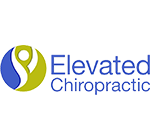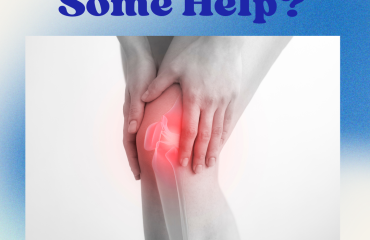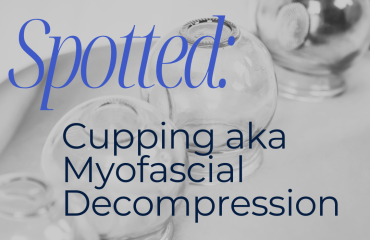We’ve had many patients ask about the function and benefits of Graston Technique. Graston Technique falls under a type of Instrument Assisted Soft Tissue Mobilization (IASTM) technique. IASTM tools range in many different sizes and materials. For example: you may have heard of trending beauty techniques using Gua Sha. The use of Gua Sha has been recorded since 220 B.C.E.! The Gua Sha tool is typically made of jade, but Traditional Chinese Medicine has been known to use coins, bones, and horns for releasing stagnation and promoting immunity. Different types of tools have been used over the years. Here at Elevated Chiropractic, we use the Graston Tool.
Before we dive into the fun stuff, we should talk about the soft tissues involved in this technique.
Fascia
Imagine you’re in the kitchen, preparing to cook up a delightful chicken dinner. Sweat falls off your forehead as you struggle to cut up your boneless poultry. You observe the root of your struggles is due to a white, glossy film encapsulating your chicken. The glossy substance is fascia.
Fascia is a connective tissue that surrounds and supports other structures such as muscles, bones, nerves, blood vessels, and organs. Web-like fascia is made of collagen fibers, elastin, and ground substance. Fascia is capable of responding to mechanical stimuli and also functions to provide emotional responses.
There are three types of fascia.

Fascia is frequently perceived as a passive tissue; however, it plays a crucial and active role in the body. Chronic fatigue, diseases, trauma, and various systemic disorders can significantly impact the function of fascia. Notably, connective tissue possesses the ability to transmit pain signals directly to the nervous system.
In the context of chronic fatigue, fascia may become fibrotic or tense which can lead to diminished smooth mobility within the tissues. This impairment can result in uncoordinated movements and the production of anaerobic metabolites, which the central nervous system interprets as fatigue. This phenomenon is often observed in individuals with fibromyalgia.
Regarding pain, the tension in the fascia can be modulated by fibroblasts—cells responsible for maintaining tissue structure. Fibroblasts play a vital role in tissue repair and remodeling. However, excessive activity of fibroblasts may lead to scarring and inflammation. This inflammation may increase edema (swelling), further contributing to tension and rigidity within the fascia.
Fascia encloses our muscle spindles and impacts our neuromuscular function. Muscles are only able to elongate as much as the fascial sheaths will permit. Contraction of the fascia restricts joint movement and our muscles’ ability to lengthen.
Graston Technique

IASTM techniques blew up in popularity in the 1990’s when the Graston Technique became the first modernized IASTM technique. In the 2000s, an increase in similar instruments and new techniques emerged when Graston lost its patent in 2006. Other brands include FAKTR, Hawk Grips, Smart Tools, Rock Blades, etc.
Graston Technique incorporates a standardized treatment protocol for treating patients and includes 6 differently shaped tools with convexities and concavities to contour various parts of the body. Graston practitioners use a lotion or some type of lubricant to allow the Graston tool to easily glide along the soft tissues. We love to butter up our patients with cocoa butter or massage lotion before using Graston. Graston is very specific for treating the tense tissues and the depth of treatment is dependent on the angles the practitioner uses for administering treatment. If the practitioner uses a lower angle to the skin, the Graston tool will treat more superficial fascia, a higher angle allows practitioners to reach deeper fascia. We can also use patient positioning and movement to reach various muscles.
To heal damaged tissues, we have to induce an itty-bitty amount of trauma to the damaged tissue to kick-start the healing process. Our E.C. team loves evidence-based practices and honestly, the proof is in the pudding. (Yum..pudding!) A study by Davison et al. concluded that IASTM induces controlled microtraumas in the tissue, creating an increase in fibroblast activity to promote healing. Another study, by Laudner K, Compton BD, McLoda TA, Walters CM showed that IASTM techniques improved the range of motion of patients suffering from musculoskeletal disorders.

How We Can Help
Like many treatments, there are contraindications to Graston so please seek out one of us for a proper eval and treatment versus trying out Graston on your own. If you have any questions, please feel free to reach out to us!
References:
- Bordoni B, Mahabadi N, Varacallo M. Anatomy, Fascia. [Updated 2023 Jul 17]. In: StatPearls [Internet]. Treasure Island (FL): StatPearls Publishing; 2024 Jan-. Available from: https://www.ncbi.nlm.nih.gov/books/NBK493232/
- Calliet R., Hand Pain and Impairment. 4th edition. Philadelphia, PA: FA Davis Co.; 1994:74.
- Davison et al. Med Sci Sports Exerc.1997
- Laudner K, Compton BD, McLoda TA, Walters CM, Int J Sports Phys Ther. 2014




